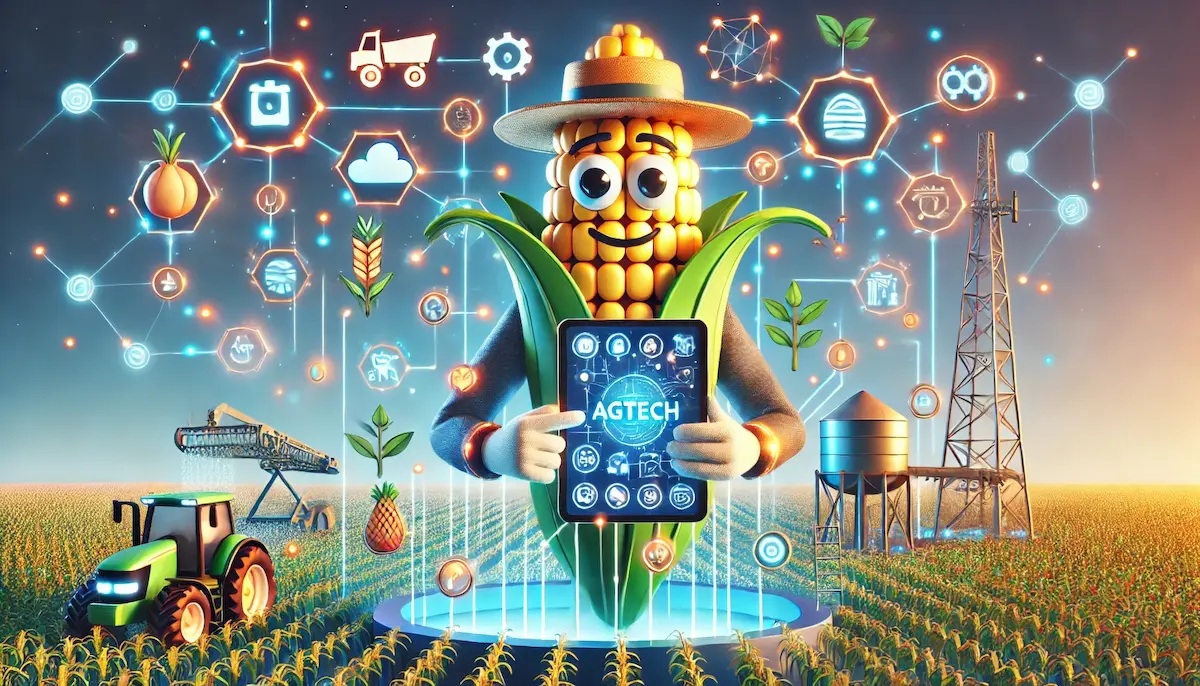Agtech, short for agricultural technology, represents the application of technological innovations to improve the efficiency and productivity of agriculture. By integrating advanced tools and systems, agtech aims to address global food challenges, enhance sustainability, and optimize farming practices. This article explores what agtech is, how it works, and its benefits and applications.
What Is Agtech?
Agtech refers to the use of technology to advance agricultural practices. This includes a wide range of innovations such as precision farming, drone technology, IoT devices, artificial intelligence (AI), and biotechnology. Agtech solutions are designed to improve crop yield, reduce environmental impact, and make farming more efficient and sustainable.
How Does Agtech Work?
Agtech works by incorporating various technologies into farming operations. Here are some key technologies and their applications in agtech:
Precision Farming
Precision farming involves the use of GPS, sensors, and data analytics to monitor and manage agricultural activities with high accuracy. This approach allows farmers to optimize field-level management regarding crop farming.
- Soil Sensors: Monitor soil conditions such as moisture, temperature, and nutrient levels to inform irrigation and fertilization decisions.
- Variable Rate Technology (VRT): Enables the precise application of inputs like seeds, fertilizers, and pesticides based on field data.
Drones and Aerial Imaging
Drones equipped with cameras and sensors provide aerial imagery and data about crop health, soil conditions, and pest infestations. This information helps farmers make informed decisions about crop management.
- Crop Monitoring: Drones can detect issues such as nutrient deficiencies, disease outbreaks, and water stress early.
- Field Mapping: Creating detailed maps for planning planting patterns, irrigation, and harvesting.
Internet of Things (IoT)
IoT devices connect various farming equipment and systems to collect and share data. These devices enable real-time monitoring and automation of agricultural processes.
- Smart Irrigation Systems: Automatically adjust water delivery based on soil moisture levels and weather forecasts.
- Livestock Monitoring: Track animal health and behavior using wearable sensors.
Artificial Intelligence (AI) and Machine Learning
AI and machine learning analyze large datasets to identify patterns and make predictions. In agtech, these technologies are used for:
- Predictive Analytics: Forecasting weather conditions, pest outbreaks, and crop yields.
- Automated Machinery: AI-powered tractors and harvesters that operate with minimal human intervention.
Biotechnology
Biotechnology involves the use of living organisms and biological processes to develop new agricultural products and practices.
- Genetically Modified Organisms (GMOs): Crops engineered for traits like pest resistance, drought tolerance, and higher nutritional value.
- Biofertilizers and Biopesticides: Natural alternatives to chemical fertilizers and pesticides that enhance soil health and reduce environmental impact.
Benefits of Agtech
Increased Productivity
Agtech solutions help farmers maximize crop yields and improve livestock production. Precision farming and biotechnology, for example, enable higher efficiency and output from the same amount of land.
Enhanced Sustainability
By optimizing resource use and reducing waste, agtech promotes sustainable farming practices. Smart irrigation systems, for instance, conserve water, while biofertilizers reduce the reliance on synthetic chemicals.
Improved Efficiency
Automation and data-driven decision-making streamline agricultural operations, reducing labor costs and minimizing human error. Drones and AI-powered machinery can perform tasks faster and more accurately than manual methods.
Better Risk Management
Predictive analytics and real-time monitoring enable farmers to anticipate and mitigate risks such as pest infestations, weather extremes, and crop diseases. This proactive approach helps protect yields and ensures food security.
Environmental Benefits
Agtech innovations help reduce the environmental footprint of agriculture. Precision farming minimizes the overuse of inputs, while biotechnology can lead to crops that require fewer pesticides and fertilizers.
Enhanced Food Quality and Safety
By improving traceability and monitoring, agtech ensures higher food quality and safety standards. IoT devices track the entire supply chain, from farm to table, ensuring transparency and accountability.
Applications of Agtech
Crop Management
Agtech tools assist farmers in optimizing planting, growing, and harvesting crops. Technologies like drones, sensors, and AI provide insights into soil health, crop conditions, and optimal harvest times.
Livestock Management
Wearable sensors and IoT devices monitor livestock health, behavior, and productivity. Farmers can track vital signs, detect illnesses early, and optimize feeding schedules.
Aquaculture
Technologies like automated feeding systems, water quality sensors, and AI-driven analytics improve the efficiency and sustainability of fish farming and other aquaculture practices.
Supply Chain Optimization
Blockchain and IoT technologies enhance supply chain transparency and efficiency. These tools ensure traceability, reduce food waste, and improve logistics from farm to consumer.
Urban Farming
Agtech supports urban farming initiatives through vertical farming, hydroponics, and aeroponics. These techniques enable food production in urban areas, reducing transportation costs and promoting local food systems.
Conclusion
Agtech is revolutionizing agriculture by integrating advanced technologies into farming practices. From precision farming and drones to AI and biotechnology, agtech innovations are making agriculture more efficient, sustainable, and resilient. As the global demand for food continues to grow, the role of agtech in ensuring food security and environmental sustainability becomes increasingly vital.
Blockfine thanks you for reading and hopes you found this article helpful.
